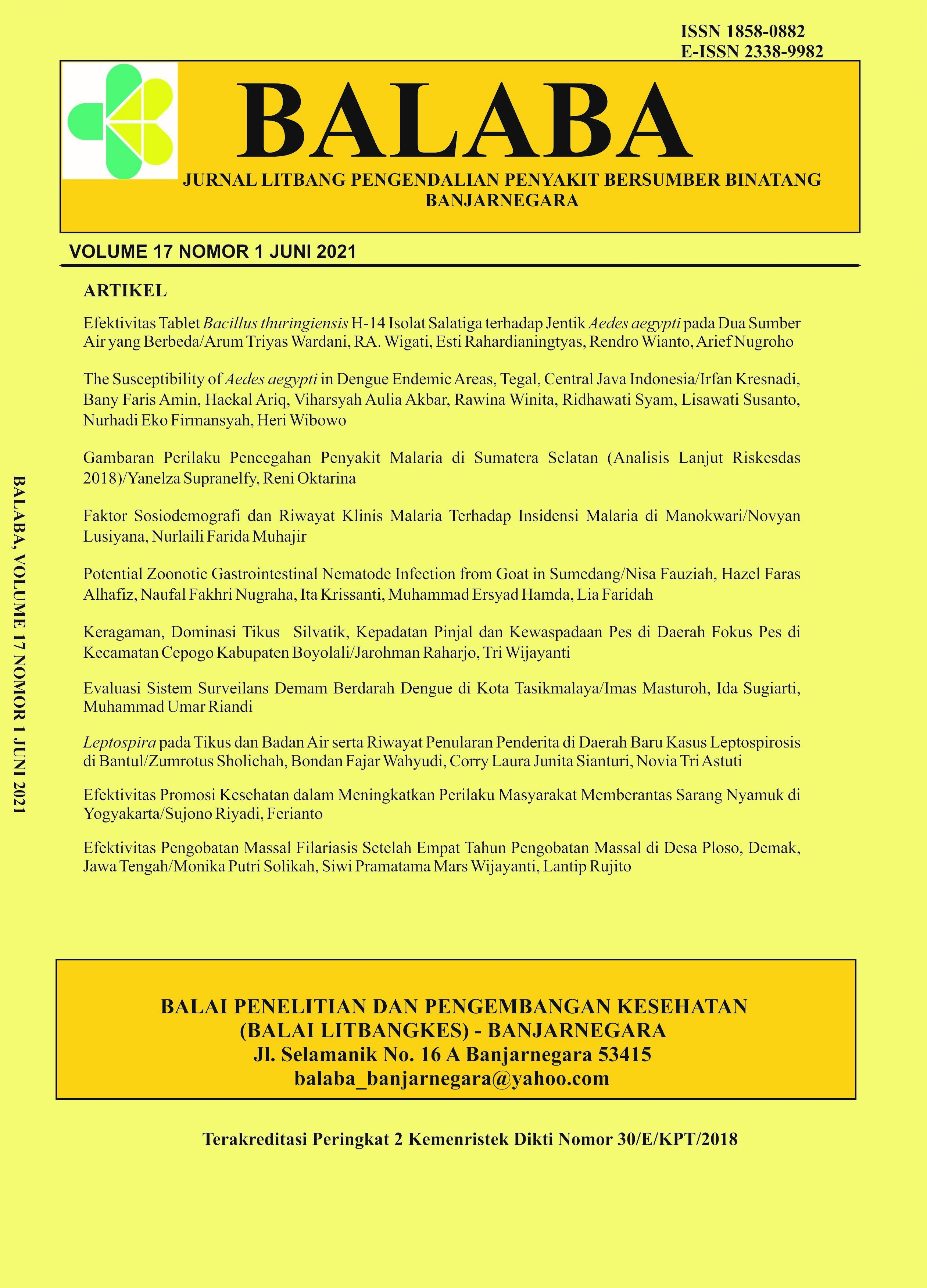Sociodemographic and Clinical Factor against Malaria Incidence in Manokwari
Keywords:
malaria, sociodemographic, geographic, clinical, PapuaAbstract
Malaria is an endemic disease in Manokwari. Malaria transmission was influenced by sociodemographic and geographic factor. However, clinical manifestation of malaria in endemic area was various from asymptomatic, mild to heavy manifestation. The aim of this study was to identify the incidence, sociodemographic, geographic factors, and clinical manifestation of Plasmodium infection in Manokwari. This was a cross sectional study, in August 2019 in two endemic villages, that is Amban and Wosi village, Manokwari district, West Papua. The number of subject involved in this study was 100. 55 subjects came from Amban and 45 from Wosi village. The sociodemographic characteristics of subject such as age, gender, address, education and occupation were recorded. Blood smear examination and Giemsa staining were performed to identify Plasmodium sp on each subject. Results of this study showed that 3% of population were infected by Plasmodium sp. Plasmodium sp. infection more experienced by men, higher education level and have a job. The demographic and geographic factors were not related with Plasmodium sp. infection (p > 0.05). All of the subjects who infected with Plasmodium sp. show manifestation such as fever, chills, sweating, nausea/vomitus, and diarrhea. The conclusion of this study is highlighted that socio-demographic and geographical factors are not associated with Plasmodium sp. infection, and Plasmodium infection is characterized by clinical symptoms.


